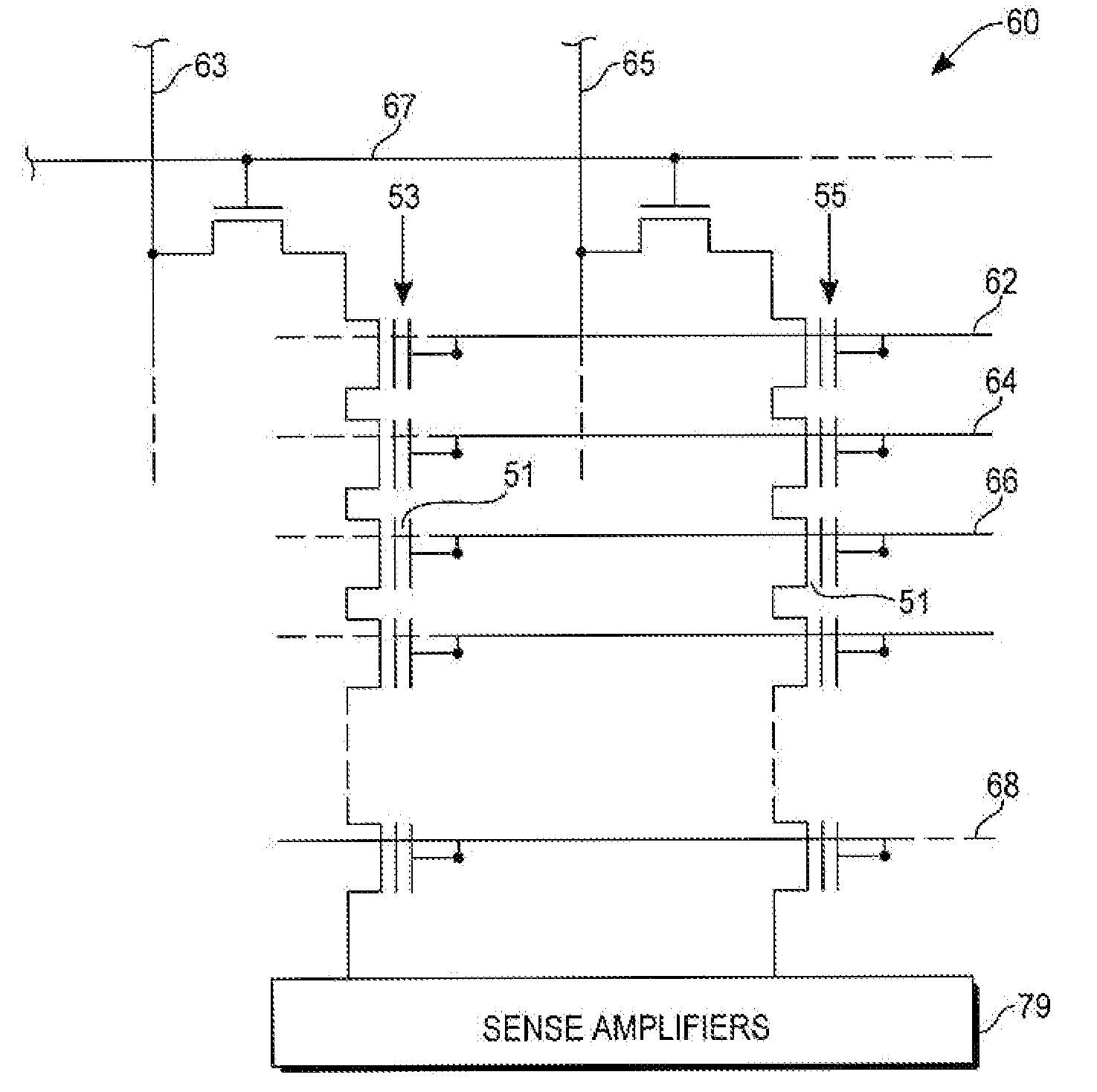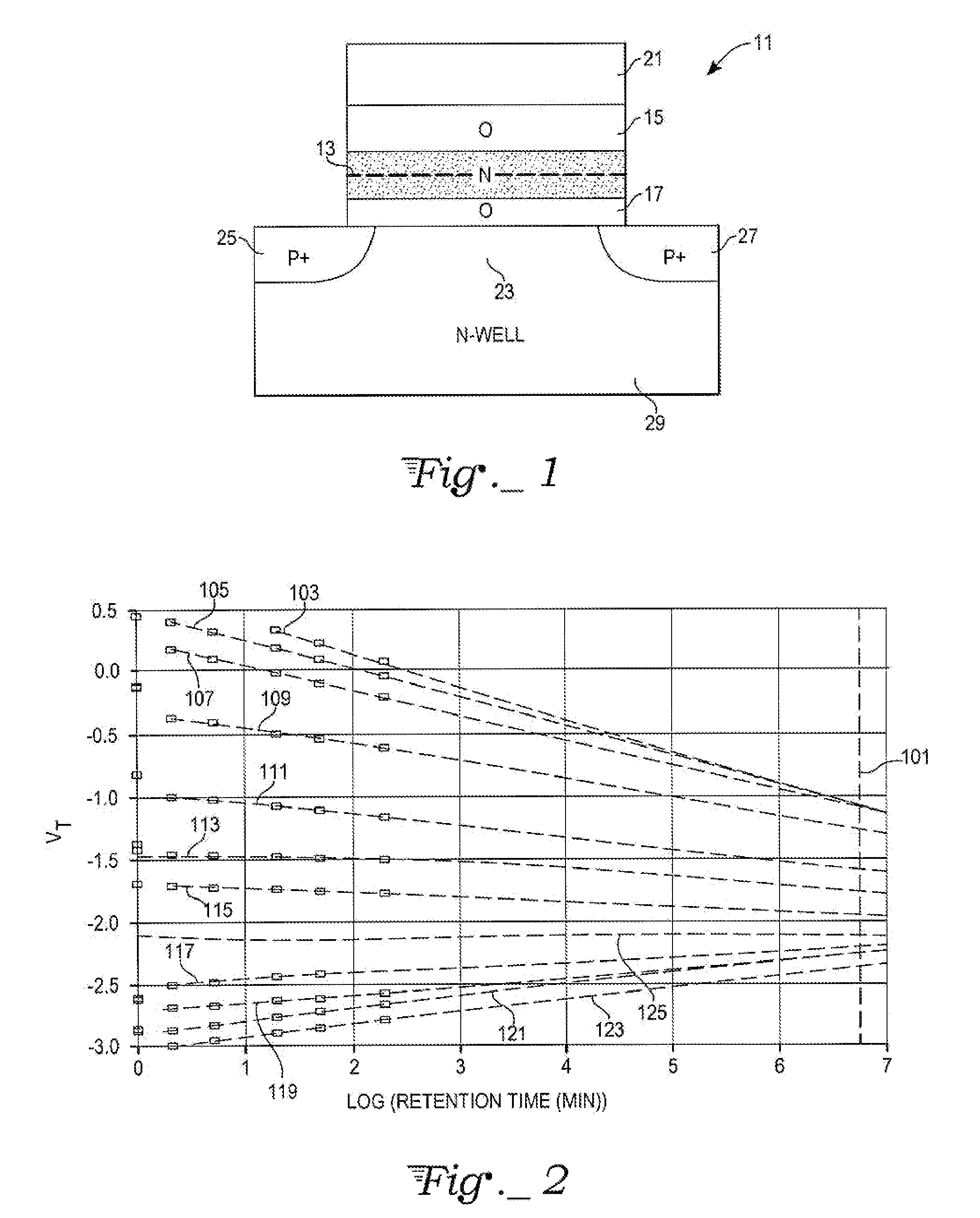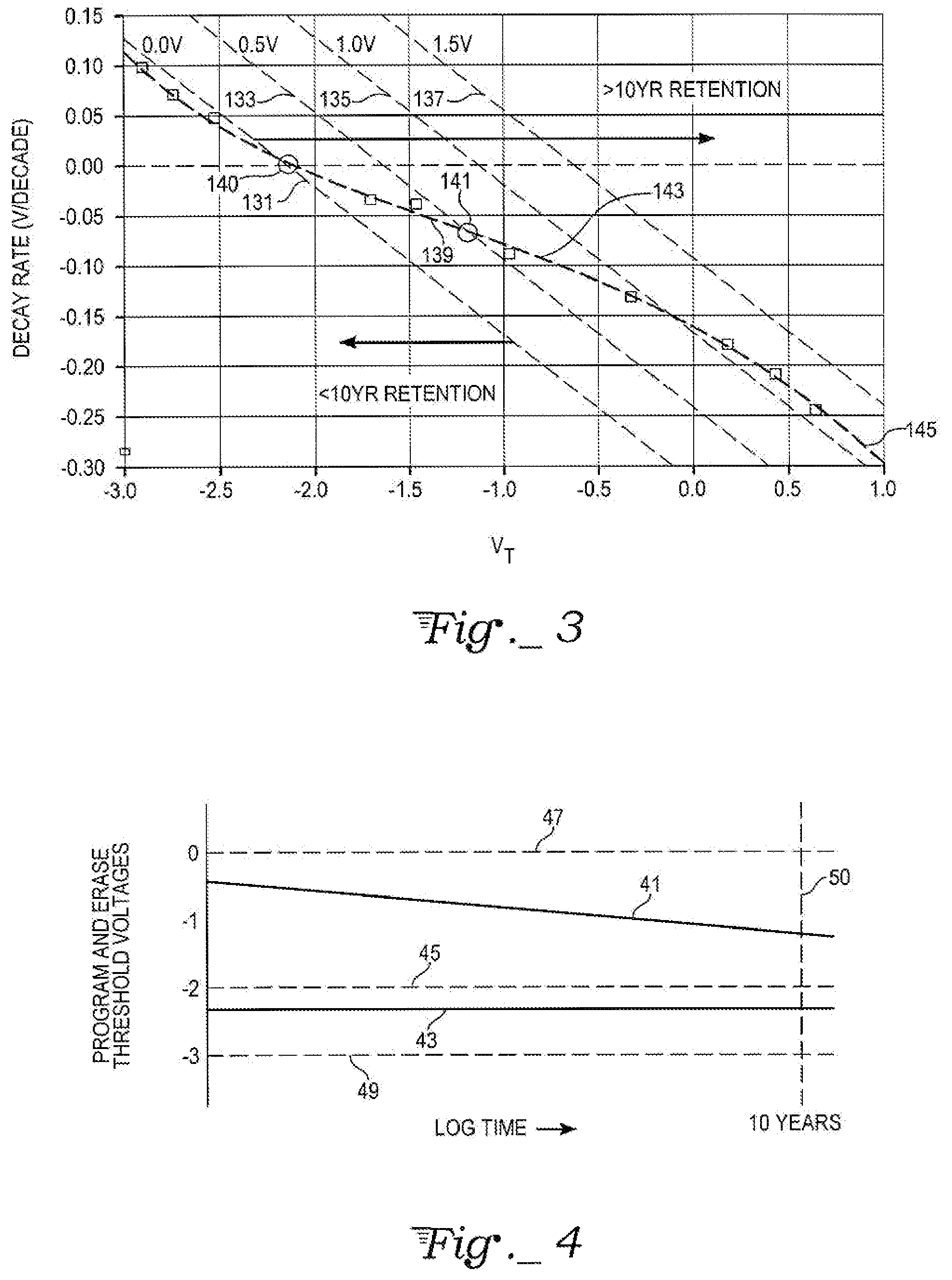SONOS memory array with improved read disturb characteristic
a memory array and read disturb technology, applied in the field of nonvolatile semiconductor memories, can solve the problems of even worse disturb problem, even more read disturb, and even more read disturb in the cells
- Summary
- Abstract
- Description
- Claims
- Application Information
AI Technical Summary
Benefits of technology
Problems solved by technology
Method used
Image
Examples
Embodiment Construction
[0016]With reference to FIG. 1, a SONS non-volatile memory (NVM) cell 11 can be made by inserting a nitride trap storage layer 13 between the gate oxide layers 15, 17 to form a floating gate EEPROM transistor in the usual way. The top electrode 21 is usually conductive polysilicon. A channel 23 is formed between source 25 and drain 27 in N-well 29. Such a non-volatile memory cell 11 has advantages in terms of process simplicity and insensitivity to defects compared to more conventional floating gate cells due to the discrete nature of the trap storage locations within the nitride layer. The construction of such a cell has been widely discussed over the past several years. One method of programming and erasing such a cell consists of utilizing FN tunneling, modified FN tunneling, or direct tunneling by applying the appropriate biasing across the gate oxide layer 17. This method allows for low currents during programming which can be advantageous, especially in low power applications ...
PUM
 Login to View More
Login to View More Abstract
Description
Claims
Application Information
 Login to View More
Login to View More - R&D
- Intellectual Property
- Life Sciences
- Materials
- Tech Scout
- Unparalleled Data Quality
- Higher Quality Content
- 60% Fewer Hallucinations
Browse by: Latest US Patents, China's latest patents, Technical Efficacy Thesaurus, Application Domain, Technology Topic, Popular Technical Reports.
© 2025 PatSnap. All rights reserved.Legal|Privacy policy|Modern Slavery Act Transparency Statement|Sitemap|About US| Contact US: help@patsnap.com



